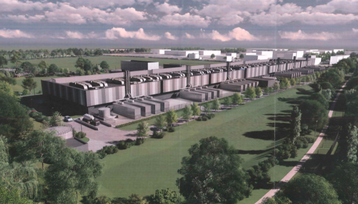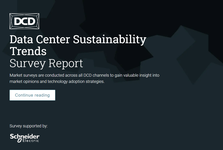Data center electricity usage is set to double by 2026 according to a new report, which blames the rise of power-intensive workloads such as AI and cryptocurrency mining for this growing demand.
The annual electricity report from the International Energy Agency (IEA) says data centers consumed 460TWh in 2022, a figure that could rise to more than 1,000TWh by 2026 in a worst-case scenario.
“Updated regulations and technological improvements, including on efficiency, will be crucial to moderate the surge in energy consumption from data centers,” the report’s authors said.
According to the report, the 460TWh consumed by data centers in 2022 represented two percent of all global electricity usage. Compute power and cooling are the two most energy-intensive processes within data centers, the authors said, and the rapid growth of artificial intelligence-related services over the last 12 months means providers have been investing in power-hungry GPUs.
The rate at which electricity usage will increase by 2026 depends on “the pace of deployment, range of efficiency improvements, as well as artificial intelligence and cryptocurrency trends”, the report said, but the authors expect demand to rise to somewhere between 650TWh and 1,050TWh. This increase is equivalent to adding the entire power consumption of a country like Sweden at the lowest end of the scale, or Germany at the highest.
In the US, which the report said is home to 33 percent of the world’s data centers, consumption is expected to rise from 200TWh in 2022 to 260TWh in 2026, some six percent of all power use across the country.
The situation is more acute in Ireland where, by 2026, data centers could account for 32 percent of all power consumption due to a high number of new builds planned. This compares to 17 percent in 2022. As reported by DCD, calls to limit the number of new data center projects in Ireland because of their energy use were rejected by the Irish government last year.
Legislation could curtail some of this electricity demand, the report said, with the European Union’s energy efficiency directive, published last September, putting new obligations on data center operators on the continent, the first of which is a requirement for emissions reports to be filed by any data center larger than 500kW. This comes into effect in May.
Data center operators are also experimenting with more efficient cooling and heat reuse technologies, with providers including Aligned and Stack launching high-density racks water-cooled racks for power-intensive workloads such as AI in recent weeks.
Last week, DCD reported that Microsoft had successfully powered one of its data centers for two days using an experimental hydrogen fuel cell system, though the viability of this technology remains in doubt.
The IEA report also predicts that the growth of renewable energy production will accelerate, and claims renewables will overtake coal to generate more than a third of the global electricity by 2025.
Mark Yeeles, vice president of the secure power division at Schneider Electric UK and Ireland, said the findings of the report come as "no surprise".
Yeeles said: "Right now, the general consumption of our data and digital habits – social media, email, businesses applications, streaming, gaming, scientific research, and enterprise – combined with the adoption of AI platforms, is compounding global data center growth at a phenomenal rate."
But he believes the data center industry's willingness to integrate new technologies which reduce demand on the grid mean it can be part of the solution.
On the situation in Ireland, Yeeles called for "immediate, sustainable action" to avoid a power crisis. He believes it is important that "government and industry collaborate more closely, and combine existing technologies with innovative engineering to future proof the country’s energy, economic, and technological outlook."







